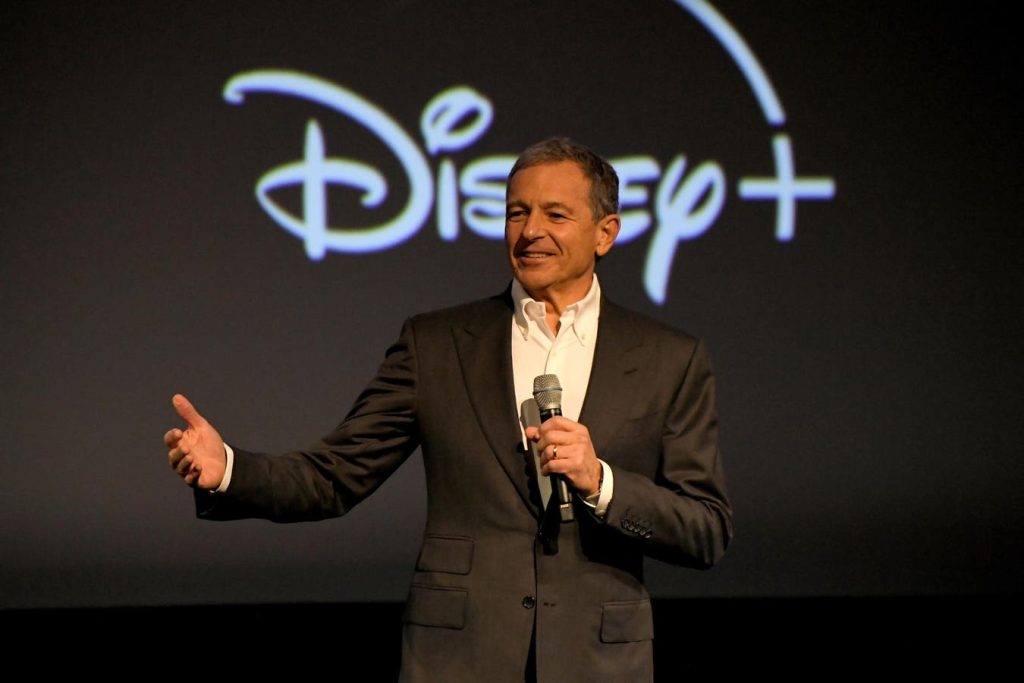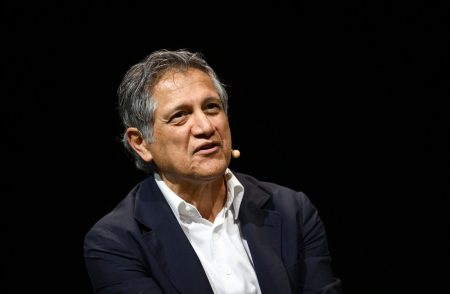I saw an interesting tendency in my recent article on visionary CEOs and their influence on returns: Some of the strongest visionaries are not usually the most liked. Disney’s Robert Iger, though, challenges this idea. Iger is highly appreciated both in the entertainment business and among investors, proving that a CEO can be both a visionary leader and popular. Why, then, is the company not performing as expected?
Bob Iger’s Rise
Strategic foresight and transforming leadership define Iger’s Disney career. Beginning at ABC and then joining Disney in 1996, he climbed to be CEO in 2005. The leading acquisitions by Iger that changed Disney’s portfolio were Pixar, Marvel, Lucasfilm, and 21st Century Fox, greatly broadening its content library.
Leading the 2019 Disney+ introduction, he helped to establish Disney as a significant participant in the streaming industry. Renowned for his strategic risk-taking and creative focus, Iger has negotiated obstacles such as the fall-off in cable TV hitting ESPN and preserving content quality. Iger resigned in 2020, then came back in 2022 to handle strategic concerns.
Current Disney Problems
Disney is facing multiple challenges. The transition of ESPN from traditional TV to digital platforms is costly, especially with high sports rights fees. A strategic shift focuses on reducing content volume to improve quality, particularly within the Marvel franchise. The advertising market is competitive, and ESPN+ has seen subscriber declines, prompting Disney to address password sharing on Disney+. The company is working to manage costs and achieve streaming profitability by fiscal 2024, while also dealing with cost pressures in its parks and planning significant investments to expand capacity globally.
In addition, Disney’s focus on “wokeness,” which includes promoting diversity, equity, and inclusion (DEI) in its content and workplace, has significantly impacted its operations and financial performance. Films like “Strange World” and “Lightyear” faced backlash and underperformed at the box office due to their progressive themes, leading to financial losses. Additionally, Disney acknowledged that its engagement in culture wars and alignment with DEI initiatives have presented risks to its reputation and brand, affecting revenue across various sectors. Despite efforts to reduce content production costs and streamline operations, Disney continues to face financial pressures, partly due to its DEI goals.
Is Iger Losing His Edge?
Visionary leaders like Iger are typically praised for their transforming power, yet even they can have difficulties that, over time, lessen their efficacy. Under strategic acquisitions including Pixar, Marvel, Lucasfilm, and 21st Century Fox, Iger’s tenure at Disney first drove notable expansion and increase of Disney’s market position. These actions demonstrated his insight and capacity to leverage priceless information assets.
But the terrain of the entertainment business has changed, and new difficulties now abound. ESPN’s move from conventional TV to digital channels has been expensive and complicated, with hefty sports rights costs driving financial resources. This, combined with the deliberate change to cut content amount and emphasize quality, has produced mixed results. The higher expenses and the necessity to fit digital trends have tested Iger’s strategic agility.
Furthermore, under examination is Iger’s leadership over the significant stock-based compensation (SBC) for Disney executives, therefore compromising shareholder value and skewing free cash flow estimates. SBC has been criticized for its effect on financial transparency and stock value, even though it is meant to match executive interests with those of shareholders.
Among Iger’s difficulties are maintaining the Disney brand’s quality in face of fast content creation and controlling theme park and experience costs. Although strategically important, the purchase of 21st Century Fox brought a large financial burden and integration difficulties, hence underscoring the dangers of overextension.
Paul Nary, Assistant Professor of Management at The Wharton School, University of Pennsylvania , who has studied visionary leadership, says, “In this second stint as the CEO, Iger seems to have taken on the role of a tactical, reactionary firefighter. There is no indication of a strong long-term vision, no focus on the “soul” or magic of Disney. The Disney flywheel has deteriorated, and I fail to see how, if all remains the same, Disney will preserve any of the Disney magic instead of becoming a portfolio of somewhat distinct assets that no longer have the incredible special sauce/synergies/flywheel of what Disney was like in the second half of the 20th century.”
Ultimately, Iger’s leadership at Disney captures the complexity that long-standing visionary leaders experience. His early achievements from strategic insight and large acquisitions must now be counterbalanced with flexible ways to negotiate changing consumer tastes, budgetary constraints, and new industry dynamics. This complex view emphasizes the need for constant innovation and sensibility with management to preserve long-term success for visionary leaders like Iger.
Activist Pressure Fails
American investor and businessman Nelson Peltz is a well-known public figure and founding partner of Trian Fund Management, a multibillion-dollar investment management company. Peltz, who was born in Brooklyn, New York, on June 24, 1942, developed his name as a powerful activist investor who holds major stakes in businesses and supports strategic reforms meant to boost their performance. Peltz is renowned for his activism in the corporate world. His investment strategies involve acquiring large stakes in underperforming companies and then advocating for management and strategic changes. This approach has often led to significant restructuring and increased shareholder returns, however, his success with Disney has been limited.
Nelson Peltz criticized Disney’s strategic orientation and financial predicament and sought a seat on the board early in 2023. Disney investors rejected his nominees in 2024 despite the proxy consulting firm ISS supporting them, choosing to keep the current board presided over by Iger. Supported by former Marvel Chairman Ike Perlmutter, Peltz’s revived efforts in late 2023 likewise failed. Peltz’s engagement exposed shareholder issues and sparked discussions about Disney’s strategic orientation, even if he did not get board seats.
What Needs To Happen Now?
Being a long-term investor and value creator means that tackling Disney’s problems calls for a calculated approach that guarantees steady development and the best uses of shareholder capital.
First, it’s absolutely vital to maximize ESPN’s move to digital media by means of clever alliances with big streaming companies like Netflix
Netflix
Amazon
Disney should implement a data-driven content approach with an eye toward audience preferences and interaction statistics. Maximizing returns on investment by giving high-potential initiatives top priority and using synergies across franchises can help simplify content creation. Disney’s position in the cutthroat advertising market can be strengthened and ad income raised with creative ideas such as interactive commercials and branded content.
Investing in theme parks depends on improving guest experiences with distinctive, immersive attractions that support more expensive ticket prices. Dynamic pricing strategies help to maximize income both during peak and off-peak periods, therefore guaranteeing a consistent flow of money. Furthermore, keeping a balanced approach to DEI projects is essential. Disney should make sure its material appeals to a range of viewers without offending the main groups. Understanding audience attitudes through market research helps one modify plans and thereby foster inclusiveness both profitably and favorably.
By matching incentives and stock-based compensation to performance criteria including revenue growth, profit margins, and stock performance over a multi-year period, CEO compensation will be aligned with long-term shareholder value. Future stability depends on creating a thorough CEO succession plan that finds and polishes internal candidates with a proven track record and strong awareness of Disney’s strategic objectives.
Regularly publishing thorough reports on important investments and predicted returns can help improve financial transparency by including shareholders and providing clear arguments for large spending. This strategy will maintain shareholder confidence and help match these expenditures to long-term strategic objectives.
Disney may successfully negotiate its present difficulties by using these techniques, therefore using its strengths to propel future expansion and profitability. These steps will guarantee that Disney stays a leader in the entertainment sector and give its owners continuous value. Unless drastic changes appear soon, the stock is to be avoided.
The author has no position in The Walt Disney Company shares.
Read the full article here
















